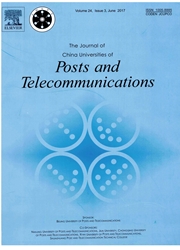

 中文摘要:
中文摘要:
这份报纸论述 noncooperative 和合作安全传播计划为多重输入多重产量(MIMO ) 与为有任意的数字的天线配置的一个助手一起的 Gaussian 窃听或偷录隧道。在这二个计划,传输器基于概括单个价值分解(GSVD ) 执行 beamforming,在一个适当力量分配算法被利用的地方。同时,助手为更高的秘密率送人工的噪音。然而,为人工的噪音的传播策略在二个计划是不同的。在第一个计划,助手采用基于 GSVD 的 beamforming。在这个计划,不过,在接收装置的信息信号上的人工的噪音的影响没被考虑。解决这个问题,助手执行基于的空间设计(SP ) 在第二个计划的 beamforming。在这个计划,非最优的 weighting 因素被介绍减少计算复杂性,它能被使适应隧道质量的变化。为二的表演的理论分析建议计划然后被给。而且,模拟结果显示没有助手,二个介绍计划比存在计划更好表现。他们也证明在第二个计划,非最优的参数背景比相等的参数设定并且相当近到最佳的参数设定好。
 英文摘要:
英文摘要:
This paper presents noncooperative and cooperative security transmission schemes for multiple-input multiple-output(MIMO) Gaussian wiretap channel with one helper for antenna configuration with arbitrary number. In these two schemes, the transmitter performs beamforming based on generalized singular value decomposition(GSVD), where an appropriate power allocation algorithm is utilized. Meanwhile, the helper sends artificial noise for higher secrecy rate. However, the transmission strategies for the artificial noise are different in the two schemes. In the first scheme, the helper adopts GSVD-based beamforming. Nevertheless, in this scheme, the impact of the artificial noise on the information signal at the receiver is not considered. To solve the problem, the helper performs space projection(SP)-based beamforming in the second scheme. In this scheme, suboptimal weighting factors are introduced to reduce the computational complexity, which can be adapted to the change of the channel quality. Theoretical analysis for the performance of the two proposed schemes is then given. Furthermore, simulation results indicate that the two presented schemes perform better than the existed schemes without helper. They also show that in the second scheme the suboptimal parameter setting is better than equal parameter setting and quite close to optimal parameter setting.
 同期刊论文项目
同期刊论文项目
 同项目期刊论文
同项目期刊论文
 期刊信息
期刊信息
